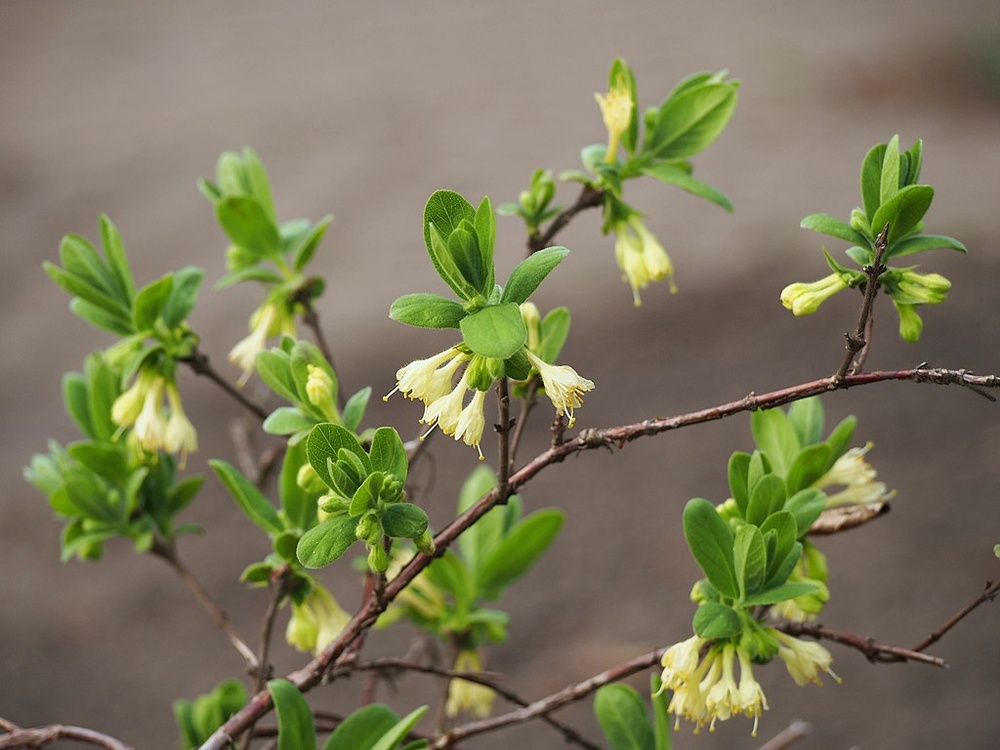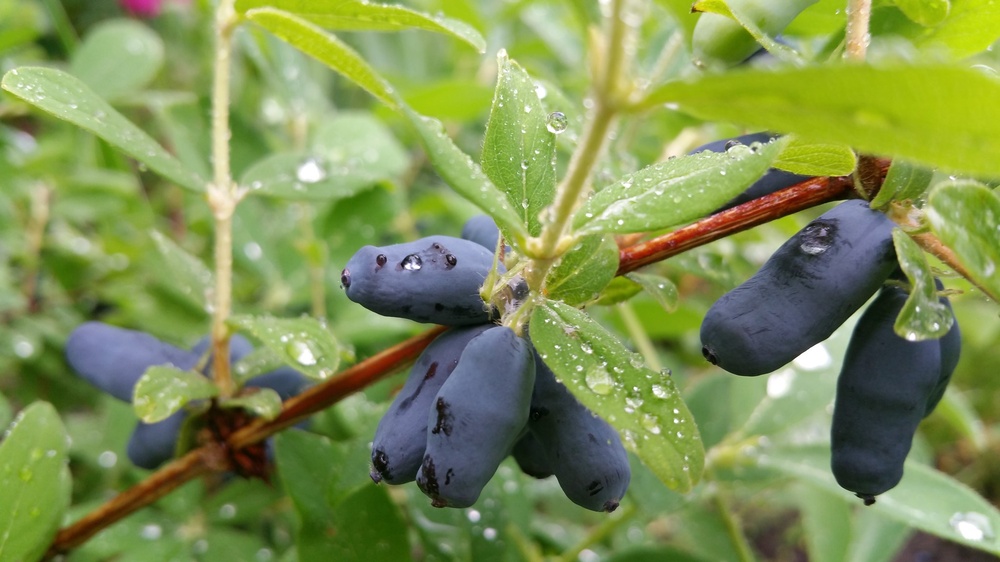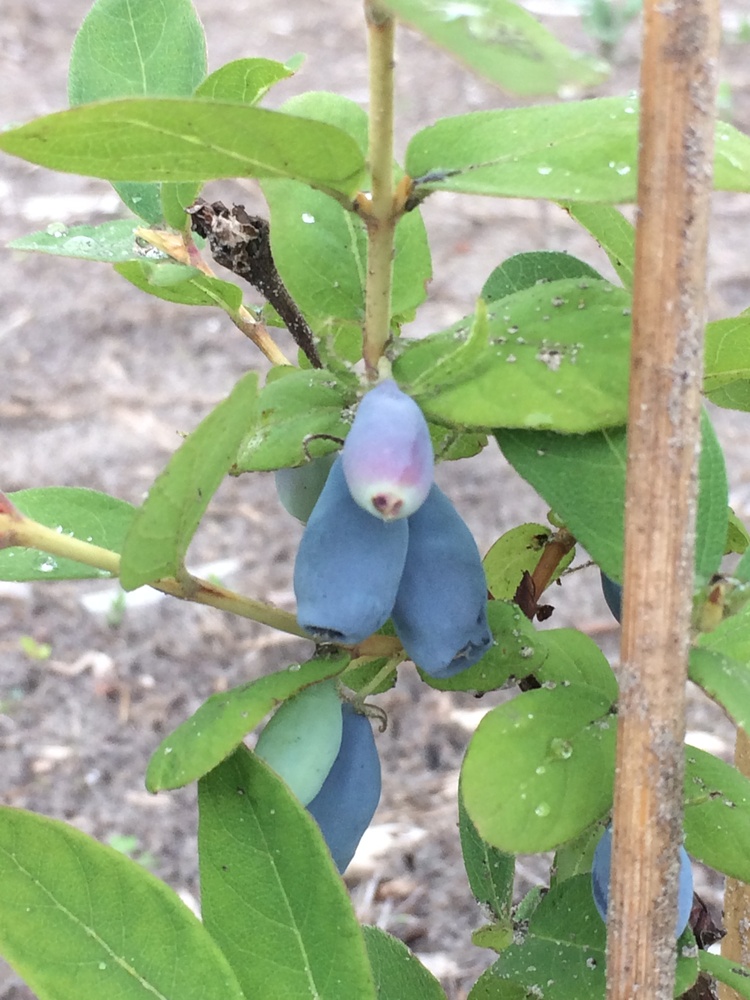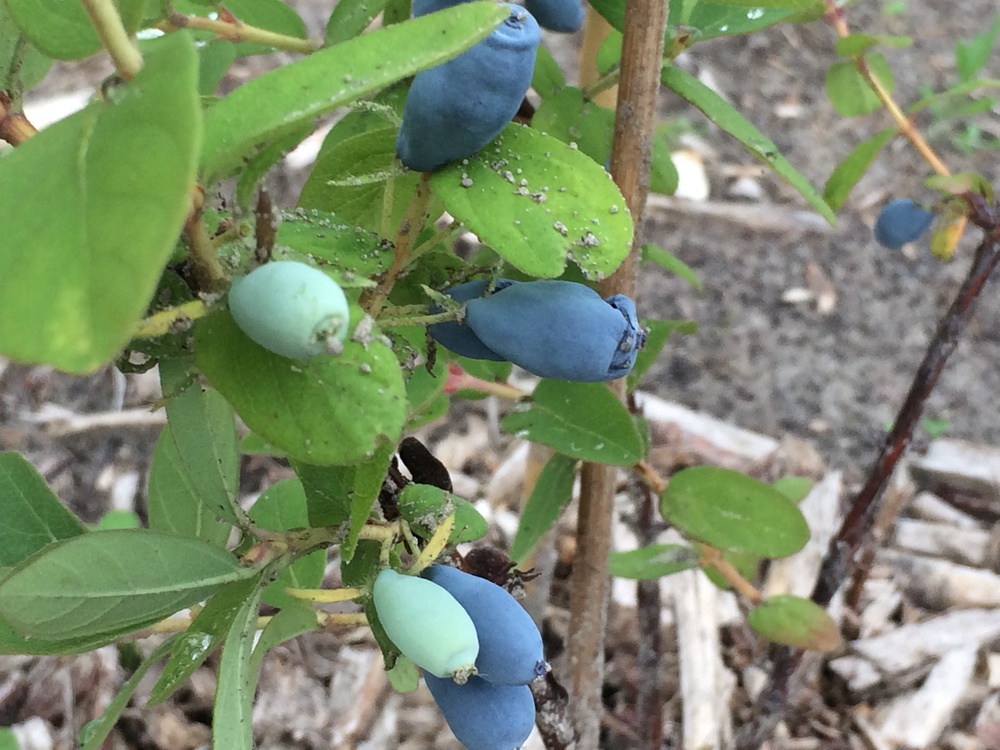Lonicera caerulea
Honingbes / Honeyberry
Caprifoliaceae (Kamperfoeliefamilie)Asia (east), Europe (whole)

Edible plant part (1)
Fruits
Read 'form of consumption' for safe preparation methods
Toxic plant part (1)
None
Honeyberry belongs to the small shrubs in the food forest. In the process of ecological succession it is a mid species. The growth rate is slow. Fully grown the plant has an average height of 1.5 meter. and a width of 1.5 meter.
The foliage (or leaf cover) is dense. It loses its leaves in september.
This species forms a fibrous shallow root system. This species is non spreading in the food forest. Honeyberry is no nitrogen fixer.
 foto: Agnieszka Kwiecień, https://commons.wikimedia.org/wiki/File:Lonicera_caerulea_subsp._edulis_2018-04-15_02.jpg
foto: Agnieszka Kwiecień, https://commons.wikimedia.org/wiki/File:Lonicera_caerulea_subsp._edulis_2018-04-15_02.jpg
 foto: Agnieszka Kwiecień, https://commons.wikimedia.org/wiki/File:Lonicera_caerulea_subsp._edulis_2018-04-15_02.jpg
foto: Agnieszka Kwiecień, https://commons.wikimedia.org/wiki/File:Lonicera_caerulea_subsp._edulis_2018-04-15_02.jpg
 foto: karen_hine, https://www.flickr.com/photos/55620187@N05/18628059278
foto: karen_hine, https://www.flickr.com/photos/55620187@N05/18628059278
 foto: Evelyn Derksen
foto: Evelyn Derksen
 foto: Evelyn Derksen
foto: Evelyn Derksen
Growth factors
- Frost (whole plant)
-
very strong frostcold frostmild frostlight frostno frost
- Frost (flowers)
-
very strong frostcold frostmild frostlight frostno frost
- Light
-
full sunlight shadehalf shadefairly deep shadedeep shade
- Wind
-
strong sea windstrong windsome windshelteredvery sheltered
- Soil texture
-
sandloamlight clayheavy claypeat
- Soil moisture
-
inundationwetmoistdrydrought
- Groundwater level
-
very lowlowmediumhighvery high
- Soil acidity
-
very acidacidneutralalkalinevery alkaline
- Soil fertility
-
very richrichaveragepoorvery poor
Flowering and pollination
- Flowering period (peak)
- early february, mid february, end of february, early march, mid march
- Flowering period (length)
- month, several weeks
- Pollination vector
- insects
- Plant reproductive fertility
- self sterile
Life Span and Plant Health
Disease susceptibility
resistantMain serious pests and diseases
noneHarvest and Consumption
Fruits
- Harvest location edible part
- Ground layer, knee height
- Harvesting period - start
- Early may, mid may, end of may, early june, mid june, end of june
- Harvesting period - length
- Several weeks
- Harvesting period - recognition
- Difficult, dropping
- Harvesting period - uniformity
- High
- Suitable harvesting methods
- Hand, mechanical
- Ease of removal - edible parts
- Easy
- Form of consumption
- Fresh, processed
- Natural storability
- Several days, several weeks
- Nutritional value - relatively high
- Vitamins
- Suitable markets
- Niche
- Productive life span - start (year) - minimum
- 2
- Productive life span - start (year) - minimum
- 3
- Productive life span - start (year) - maximum
- 3
- Productive life span - peak (year) - minimum
- 2
- Productive life span - peak (year) - minimum
- 7
- Productive life span - peak (year) - maximum
- 5
- Productive life span - peak (year) - maximum
- 8
- Productive life span - end (year) - minimum
- 25
- Productive life span - end (year) - maximum
- 30
- Productivity - start (kg) - minimum
- 2
- Productivity - start (kg) - maximum
- 5









































